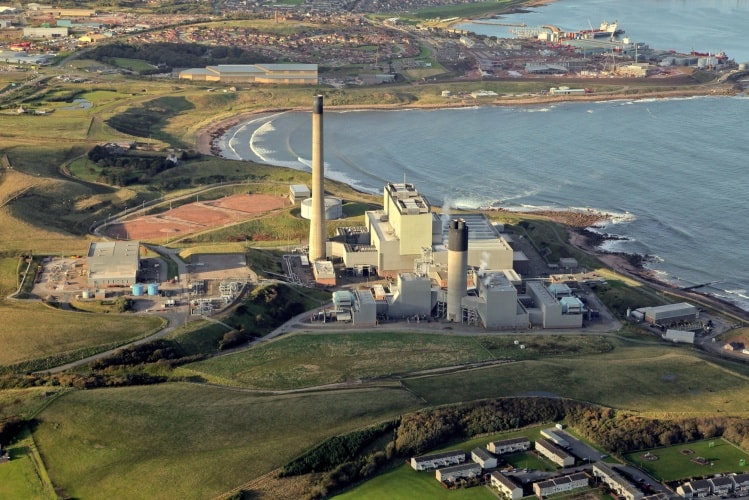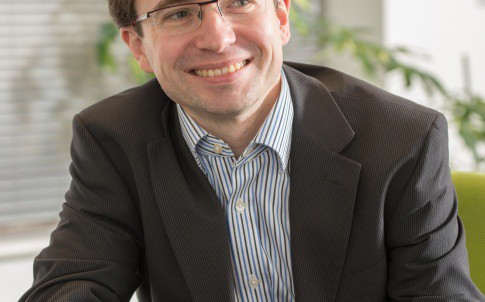Despite government deferment, CCS is still a vital cog in meeting the UK’s carbon targets, says the managing director of 42 Technology
December’s widely celebrated COP21 Paris agreement has the objective to “achieve a balance between anthropogenic emissions by sources and removals by sinks of greenhouse gases in the second half of this century”.
Balancing sources and sinks is certainly a more pragmatic approach than trying to eliminate the use of fossil fuel entirely. However, observed CO2 concentrations have been rising for decades, and although natural sinks can help, they work very slowly and in isolation are unlikely to make the impact required.
Timing matters because the second, more fundamental goal is to “limit the temperature rise to 1.5˚C”, and certainly “well below 2˚C”.
Temperature rise is related to cumulative global net emissions, with trillionthtonne.org reminding us that to keep global warming under two 2˚C, cumulative global emissions must not exceed 1tn tonnes of carbon equivalent. Around 600bn tonnes have already been emitted and at current progress we will probably have emitted the remaining 400bn tonnes within the next 30 years or so. At that point the damage is done no matter how balanced we are in the second half of the century. Indeed, burning even half of known reserves (as estimated by the BP Statistical Review of World Energy) will take cumulative emissions to more than 1tn tonnes, irrespective of how much we try to dilute this
with nuclear and renewables.

So the planet has to either leave fossil-fuel reserves in the ground or sink some carbon – or both – in the next 30 years. Permanently resisting extraction of valuable fossil fuels is difficult and strongly opposed by developing and transition economies still experiencing poverty. These are economies that believe they deserve to use those resources to create wealth.
The leading large-scale CO2 sink option is probably carbon capture and storage (CCS); a technology that is already in operation in a handful of sites around the world.
The UK has for some time been (almost) a global champion for CCS. And certainly we have done more front-end engineering design (FEED) studies than most. There have been at least five major FEEDs completed on commercial scale end-to-end CCS projects in the UK.
The 2007 BP DF1 pre-combustion gas CCS project at Peterhead was abandoned after the (self-funded) FEED study had been completed, and the then Labour government announced it would only fund coal CCS. In 2011 the Longannet and Kingsnorth FEEDs were completed but failed to reach agreement with the Coalition government to fund their construction. And, in November 2015, weeks before the conclusion of a four-year process, the Conservative government stealthily scrapped a long-promised £1bn capital grant fund for CCS, a decision that will lead directly to the almost certain cancellation of both the White Rose IGCC project and the Shell/SSE Peterhead post-combustion gas projects, just as those FEEDs reached completion.
UK investment in CCS research is rational and defensible. As a relatively small power island, the UK will feel the need for CCS earlier than larger or more connected decarbonising economies. UK carbon-reduction obligations are set by the Climate Change Act, then through ‘carbon budgets’. The fifth carbon budget (drafted with 2˚C, rather than 1.5 in mind) is available in draft, ready for legislation in June 2016 and contains a glide path for electricity generation carbon reduction; reducing to around 10 per cent of today’s value (50g/kWhr) by 2030.
The cleanest non-CCS fossil plant is a combined cycle gas turbine (CCGT) emitting perhaps 350g/kWhr. Consequently, no more that 15 per cent of annual generation could be CCGT to meet the 50g/kWhr 2030 target. Unfortunately, this is almost certainly impossible as the UK power grid must ensure a continuous, instantaneous and exact match of supply with hugely variable demand. Only fossil generation has the capacity to provide this flexibility and much of which will need to be equipped with CCS to meet the UK’s own carbon targets.
Tomorrow’s opportunities for CCS will be huge. The long-term need for CCS was amplified by COP21: we need to create new carbon sinks so the planet needs CCS. Furthermore, the COP21 process made it clear that emission reduction burdens need to be equitably distributed.
In addition to the high-profile FEEDs, there has been a wealth of world-class academic research and industrial studies in the UK that have built knowledge and understanding. The government took a difficult decision to defer UK CCS development. However, with the demise of White Rose and Peterhead, this knowledge will be lost unless there is urgent action to ensure that we are ready for the opportunities, indeed the necessities, that will arise tomorrow.
Jeremy Carey is managing director of 42 Technology





Collaboration to address viable solutions for VAWG database
<blockquote>address the lack of standardisation, coordination, and collaboration of gender disaggregated data intelligence across various regions,...